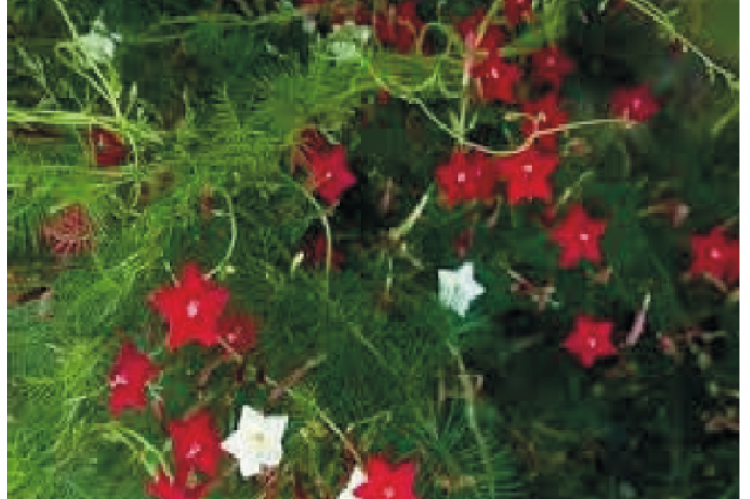Ipomoea quamoclit is originally American plant and reached Europe by the 1550s. It is commonly known as cypress vine, cardinal creeper, is a species of vine in the family covolvulaceae and the vines are recorded from both Europe and India in the 1500s and were taken to both places for its medical uses. It is a medicinal plant traditionally used to treat haemorrhoid’s, ulcers, diabetes and cancer. According to ayurveda, Cypress Vine plants are used to treat various ailments and are also an important ingredient in the preparation of some medicinal products. However, they are widely grown throughout the topics as an ornamental plant for their attractive flowers and exotic leaves. This ornamental plant grows as an annual plant that thrives only in tropical and subtropical regions. In non-tropical areas, these are grown as seasonal plants. Ipomoea quamoclit L is a less studied medicinal plant which is used as folk medicine around the world for illness. The plant is considered cooling and purgative; used in chest pain, pounded leaves are used as remedy for bleeding piles and carbuncles. It is belonging to convolvulaceae family is an annual, herbaceous plant, commonly known as mayil manikkam, akasamulla, kunjalata, tarulata, kamalata, getphul in India and distributed throughout the tropical areas of the world. It is one of the commonly cultivated members of the convolvulaceae, and arguably the most strikingly beautiful morning glory in the horticultural trade. These scarlet flowered climbers form a delicate, lacy mass of pinnately divided leaves during the warm months in temperature regions, and year-round in tropical areas. Various studies have confirmed that Ipomoea quamoclit exhibit a vast range of bioactivities like antioxidant activity, antimicrobial activity, anticancer activity, antidiabetic activity as well as insecticidal activity.
View:
- PDF (546.96 KB)


